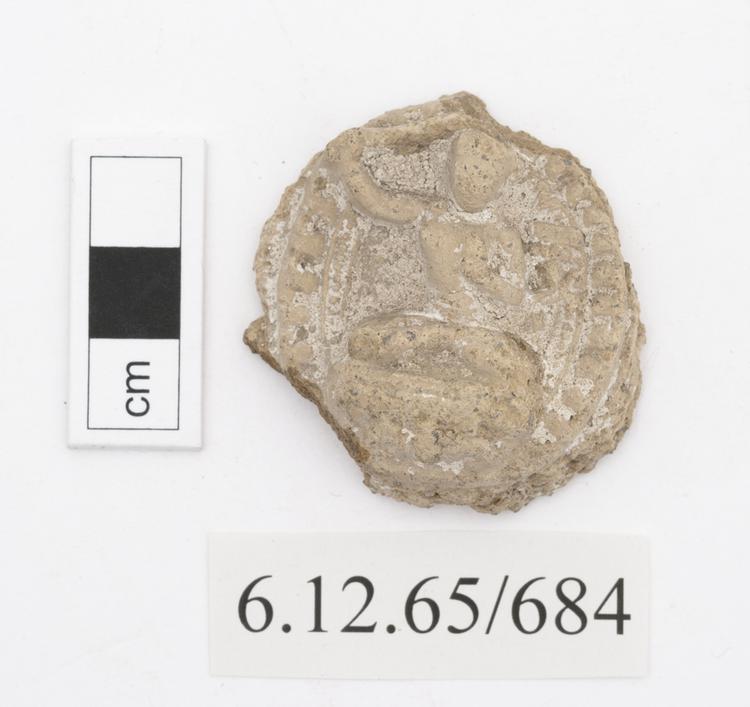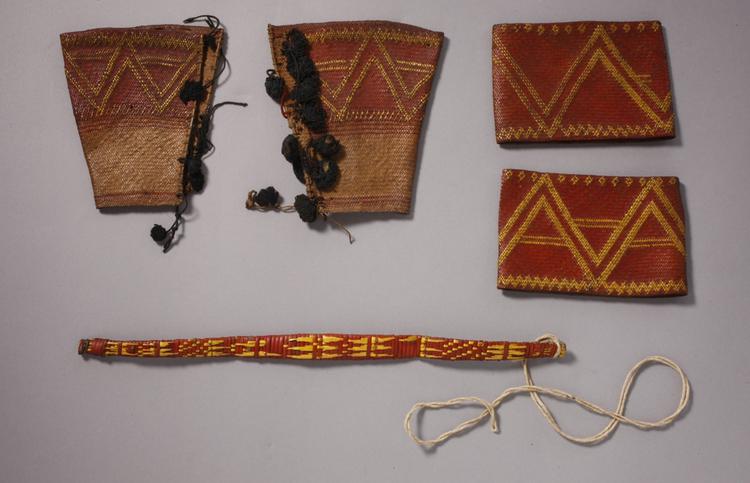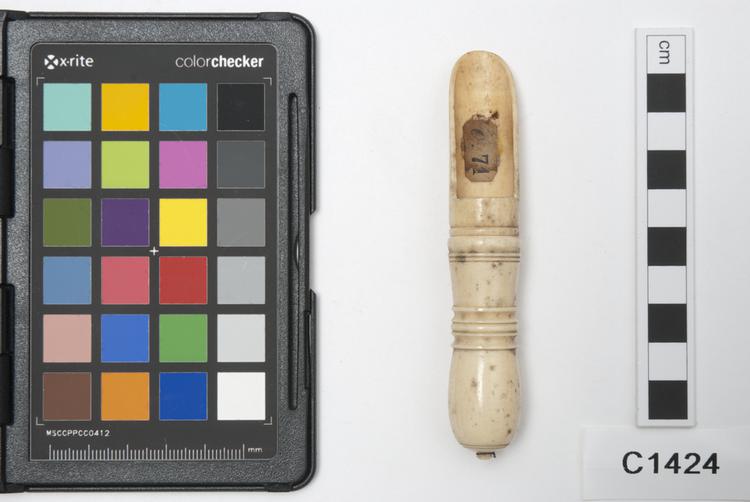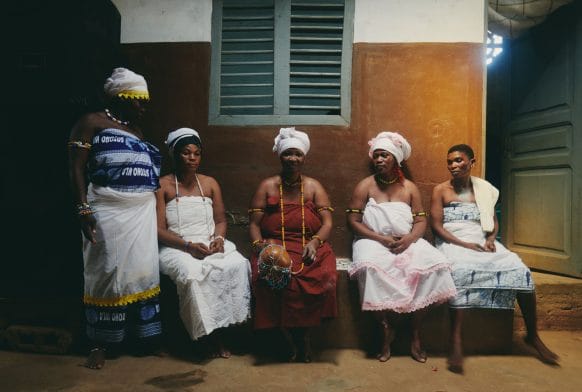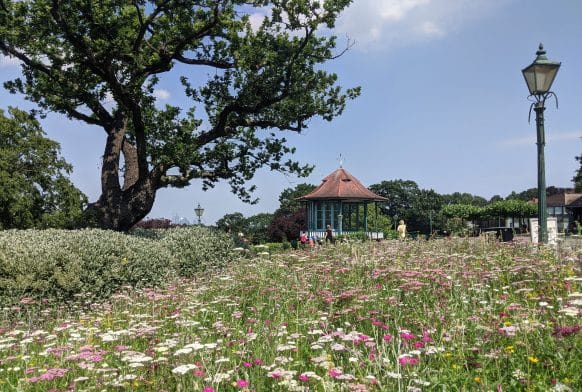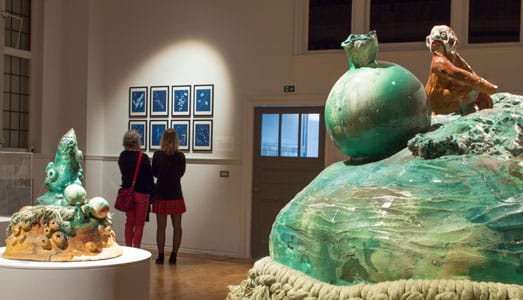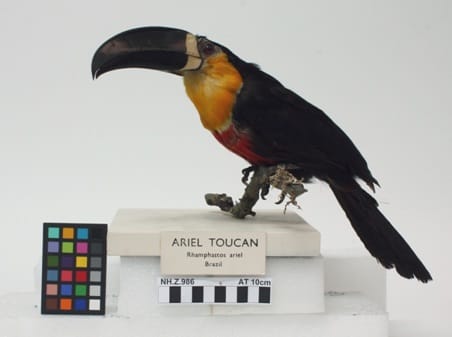A continuous closed circle of woven textile for a woman's skirt made from cotton and dyed with vegetable dyes. The textile's maker is Eu Dane alias Ina Keraba Lodo. It shows continuous warp weaving. Since it is one piece it is called he kene. It would be cut into 2 sections and sewn together to form the skirt. One section would then be the mirror image of the other. The fabric is mainly warp-faced ikat. All ikat stripes are patterned cream on a red ground. The sets of stripes at either selvedge are made up of 3 repeated sequences. One set contains narrow black and white patterned stripes, known as 'raja wenyi'. These 'raja' are created with a floating warp. Between both sets of stripes lie a solid blue-black stripe, and the main ikat stripe. Its motif, called 'wo ketada pudi' or 'wo tada', is a variation on the motif 'kobe molai' or 'male kobe'. Tada refers to dots of indigo added with the fingers after dyeing in red. Here wo ketada pudi (pudi = white) means that no indigo dots have been added. The dyes used are indigo (blue-black), morinda citrifolia (red), and tumeric (yellow). [See original description 1 & 2 for details.]
Continue exploring anthropology
Collection Information
These objects are only a part of our collections, of which there are more than 350,000 objects. This information comes from our collections database. Some of this is incomplete and there may be errors. This part of the website is also still under construction, so there may be some fields repeated or incorrectly formatted information.
The database retains language taken from historical documents to help research. Please note that some records may feature language and reflect systems of thinking that are outdated and offensive. The database also includes information on objects that are considered secret or sacred by some communities.
If you have any further information about objects in our collections, can suggest corrections to our information or if you see content requiring immediate action, please contact us: enquiry@horniman.ac.uk



